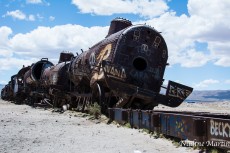No, this is not urbex, it is a € 10 visit at the museum. But it still remains one of the most unusual places that can be visited in Paris. The tour begins at Place Denfert-Rochereau in the 14th arrondissement. But in fact, with a two hours...
Old country cemeteries
I see dead people
While Catholics generally have the habit of placing their cemeteries behind the churches, this rule is often not respected among Anglicans who put their cemetery at the corner of a country road or in the middle of a pasture.
Many of these cemeteries are family cemeteries, a long tradition in France in the late seventeenth century, when Protestant burials were prohibited in Catholic cemeteries. I do not know if this tradition in Canada of the last centuries has taken root in England for the same reasons, but the English traditions differ greatly from those of their French-Canadian neighbors. However, for families, it is reassuring to have closer to them the loved ones instead of burying them in the cities of the dead.
In several regions of Quebec, formerly populated by Loyalists and other British subjects, we find these Anglicans cemeteries who are now poorly maintained, lack of means. Most of the time, these are a handful of citizens who maintain the cemeteries for free by cutting the lawn and repairing the broken headstones. Attached to their cemeteries where their ancestors are buried, they get, unfortunately, very little help from their congregations who already have a lot of money problems with their churches who are getting empty and all the needed renovations.
Related content
It is at Uyuni, a small town of just over 10,000 inhabitants located more than 3,670 meters above sea level that can be found one of the most famous train cemetery. Well, we must also say that the world's largest salty desert is located in Uyuni...
















